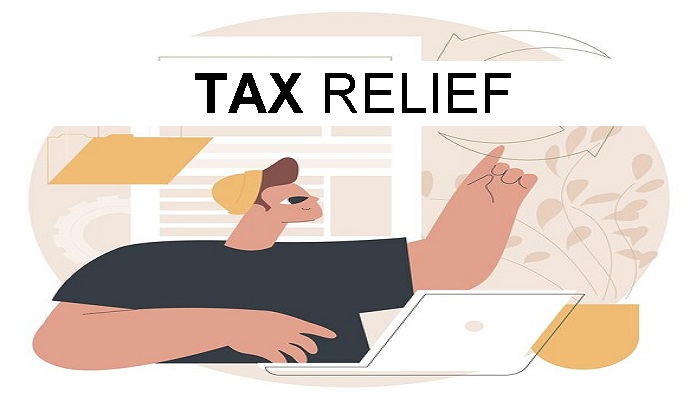Tax Relief: Meaning, Types, Examples, & Qualifications

Tax relief is a way to reduce the total amount of tax you owe to the government. This can come in different forms, such as tax deductions, tax credits, and tax exclusions. These tools help individuals and businesses lower their tax liabilities, providing financial relief, especially during challenging times.
But what exactly does tax relief involve, and how can it benefit you? Let’s dive deeper into the details and understand why tax relief is something every taxpayer in the United States should know about.
Key Takeaways:
- Tax relief can come in various forms, like deductions, credits, or exclusions, each reducing your tax burden differently.
- Understanding the different options available can help you save money and avoid overpaying the IRS.
- The eligibility criteria for tax relief vary, so it’s crucial to know which options apply to your specific situation.
How Does Tax Relief Work?
When you hear “tax relief,” it might sound like a complex financial term, but in reality, it’s quite simple. Tax relief is designed to give individuals and businesses the opportunity to reduce their tax obligations through legitimate means. This can range from deductions for expenses to credits for specific activities or exclusions on certain types of income.
For example, if you qualify for a tax deduction, it lowers the income that’s subject to tax. This means if you earned $50,000 and had $10,000 in deductions, you’d only pay taxes on $40,000. Tax credits, on the other hand, directly reduce the amount of tax you owe. So, if you owe $2,000 in taxes and have a $500 credit, you’d only need to pay $1,500. Lastly, tax exclusions allow you to exclude certain types of income, like gifts or inheritances, from being taxed.
Each form of tax relief serves a unique purpose, and understanding these differences can help you make better financial decisions.
“Tax relief is not about avoiding taxes. It’s about paying only what is fair and using the tools available to reduce your burden.”
Types of Tax Relief: Which One Suits You?
There are several types of tax relief programs available, and knowing which one applies to your situation is the key to maximizing savings. Let’s break them down:
Tax Deductions
Tax deductions lower your taxable income, reducing the amount you owe overall. Common deductions include mortgage interest, student loan interest, and charitable contributions. These can make a significant difference in lowering your taxes, especially if you itemize your deductions.
Example: If you’re a homeowner, you can deduct mortgage interest, which can substantially lower your taxable income.
Tax Credits
Unlike deductions, tax credits directly reduce the amount of tax you owe. This is one of the most powerful forms of tax relief because it offers a dollar-for-dollar reduction in your tax bill. For instance, the Child Tax Credit can significantly reduce what parents owe during tax season.
Example: If you owe $3,000 in taxes and qualify for a $1,000 tax credit, you’ll only owe $2,000.
Tax Exclusions
Tax exclusions are another form of relief that allows you to exclude specific types of income from your taxes. Common examples include certain gifts, inheritances, or even life insurance payouts. By excluding these from your taxable income, you lower your overall tax burden.
Example: If you receive a gift of $15,000, it might not be taxed due to the gift tax exclusion.
Each of these relief options can help lower your tax bill, but it’s essential to understand which ones you’re eligible for and how they work.
Who Qualifies for Tax Relief?
The great thing about tax relief is that many Americans qualify for it without even realizing it. Whether you’re a parent, a homeowner, or someone dealing with medical expenses, there are several relief programs designed to help ease your financial burden.
For instance, if you’re a small business owner, you might be eligible for deductions on business expenses, equipment purchases, and even employee wages. Homeowners can deduct mortgage interest, while parents can benefit from child-related tax credits.
It’s important to consult with a tax professional to find out which programs you qualify for, as these can save you thousands of dollars each year. The IRS also offers relief programs for those struggling with back taxes, allowing for payment plans and even tax forgiveness in extreme cases.
How Can Tax Relief Benefit You?
Tax relief can offer significant financial advantages, but the benefits extend beyond just saving money. Here’s how it can help:
- Increase in disposable income: By reducing your tax bill, you’ll have more money in your pocket to cover living expenses, save, or invest.
- Debt reduction: Many people use tax savings to pay down debts, such as student loans, credit cards, or mortgages.
- Reduced financial stress: The less you owe in taxes, the more financially secure you may feel, reducing the stress often associated with tax season.
- Business growth: For entrepreneurs, tax relief can free up funds that can be reinvested into growing your business.
Understanding tax relief can help you make informed decisions, ensuring you’re not paying more than you need to.
The Bottom Line
At its core, tax relief is designed to help taxpayers reduce their financial burdens legally. Whether it’s through tax deductions, tax credits, or tax exclusions, understanding these different options is key to keeping more of your hard-earned money.
Don’t let the complexity of taxes keep you from getting the relief you deserve. Take the time to explore your options, consult a professional if necessary, and make sure you’re taking advantage of every relief opportunity available to you.
“It’s not about evading taxes. It’s about making sure you’re paying only what you owe, and nothing more.”